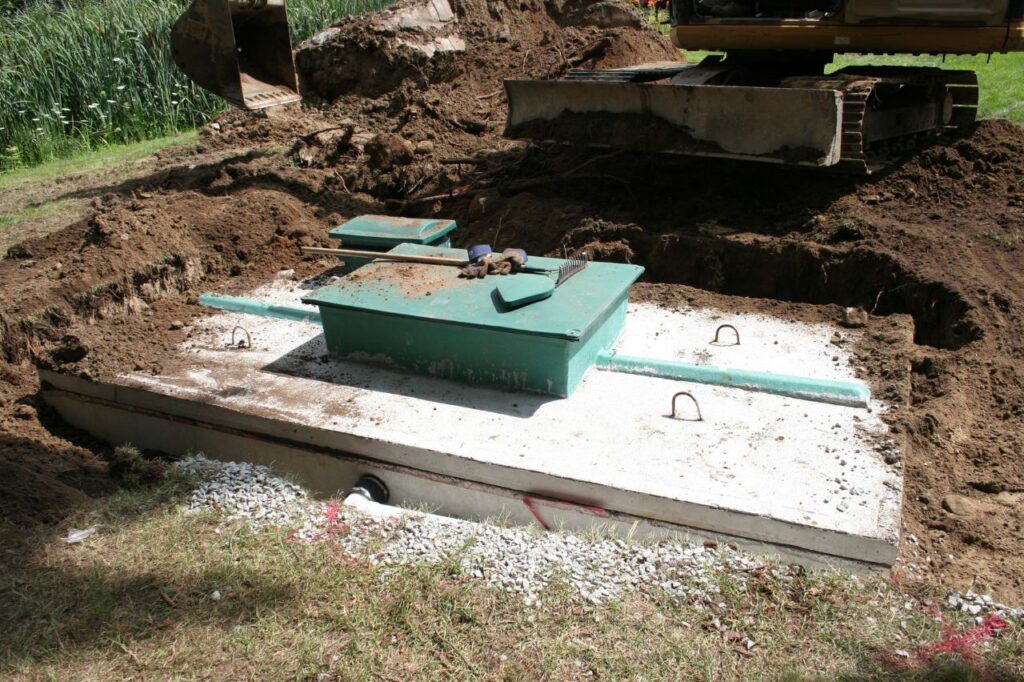Tanks
Septic tanks are essential components of a home’s septic system and can be constructed using different materials. Polyethylene/polypropylene resin, fiberglass-reinforced plastic, and precast concrete are the most common materials used for septic tanks.
Precast concrete has been traditionally used for onsite septic systems due to the abundance of information on its use.
However, more people are starting to use tanks made from FRP and polyethylene because they have certain advantages over traditional concrete septic tanks. The advantages and disadvantages of each tank material should be considered before making a decision.
Polyethylene/Polypropylene Tanks
Polyethylene/polypropylene tanks, often referred to as “Poly tanks”, can be rotationally molded in one piece or two pieces through injection molding. These tanks usually have a ribbed/corrugated design to improve structural performance and must be installed properly with rubber and plastic pipe seals for watertightness.
While Poly tanks are typically lighter than concrete ones, they may float up from the ground in high water table areas due to the material’s light weight. Other disadvantages include a limited range of sizes, not being rated for traffic, and needing to be filled with water/wastewater at all times.
Despite this, Poly tanks have quite a few advantages including being rust or corrosion resistant, not having seams that potentially leak, and being economical. Check with your local codes when assessing any septic tank material as well as manufacturer installations instructions for strength and other requirements.
Fiberglass Reinforced Plastic (FRP)
Fiberglass Reinforced Plastic (FRP) is a light-weight material commonly used in the manufacturing of water storage tanks. FRP tanks can either be produced as one-piece or two-piece using an injection molding process.
To ensure the structural soundness and watertightness of the tank, only high-quality raw materials and careful attention to manufacturing standards are employed. The two-piece FRP tanks are usually shipped unassembled and must be permanently fastened together with appropriate adhesives and stainless-steel bolts before installation.
It is important to make sure that all joint connections are watertight; this can be verified by filling the tank with water above the joints and checking for leaks.
Some advantages of FRP tanks include being lighter than concrete tanks, being resistant to corrosion, and being available in larger capacities; however, they can be more expensive compared to other types of tanks, they have stringent installation requirements, and they are more prone than concrete tanks to floating out of the ground due to their light weight.
Concrete
Precast concrete septic tanks offer many advantages over other tank materials, such as enhanced resistance to buoyancy due to the dense material and a wide selection of sizes for various applications. They can also be designed for deeper burials and even traffic rated if necessary.
Installation can sometimes be difficult due to the heavy weight of the material, but reliable mechanical connectors such as rubber boot seals provide a watertight seal and greater flexibility when backfilling or settling occurs.
Seals usually consist of blended compounds such as butyl rubber-based or asphalt-based (bituminous) sealants, but flexible gaskets are available that can be cast directly into the tank at manufacture.
Even though precast concrete tanks tend to be more economical than other tank types, they require proper installation with verification at completion before use in order to ensure that the tank is tightly sealed with no leakage potential points.

